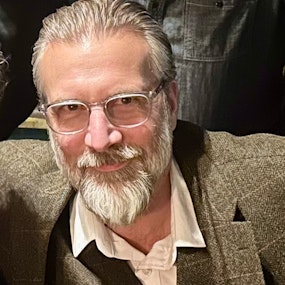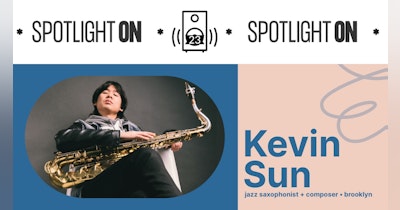This show was the first of a three night run to close out the Grateful Dead's 1990 Summer Tour.
The band was on a stellar, multi-year tear that began with the Spring East Coast Tour in 1987 but really found its legs throughout 1989. By Summer of 1990, the band was hot, and at a peak that the members themselves remember as one of their highest.
They were also hurtling towards a pretty big crisis, though when it hit it seemed they treated it as a mere bump in the road. That crisis was the death of keyboard player Brent Mydland, only a few days after this run of shows, from an accidental speedball overdose in his California home.
Brent died on July 26 and the band was back on stage for their Fall Tour on September 7. As if to underline just how important Brent had become to the band in his 11 years with them, it took two keyboard players to fill his shoes.
We, of course, knew nothing about any of this when the five or six of us piled into the car, leaving New Haven for the Chicago suburbs on July 20. If I recall correctly, we did the 16-hour trip more or less in one shot, taking turns at the wheel.
Something funny I remember about the drive out is that we were a little punchy in the final leg of the trip but got a second wind as we were leaving Ohio. The feeling was, "We're almost there!"
But we forgot about Indiana. You see, Indiana comes after Ohio and before Illinois. Fucking hippies.
We rolled into town a little crispy from the ride, but ready to go.
I left with tickets for only two of the three shows, the last two, but had little difficulty scoring for the first night. I have some memory of this being a fake ticket. I do know that I do not have any other Ticketmaster ticket stubs of this odd colour in my collection. I cannot remember now if the person who sold it to me told me it was fake, if I discovered that it was after seeing someone else's ticket or if the ticket-taker at the door told me and let me in anyway. This was all many braincells ago.
There are a lot of mixed opinions about this run of shows online. After reading through many fan posts and comments - and listening to a recording of this one again - I think I can discern why: these were not the most freeform or psychedelic Grateful Dead concerts, especially when compared to the high bar set over the previous 12 months. Instead, these were very, very solid, almost muscular performances, with a lot of fiery energy from the band members. I perceive it as a last big burst of enthusiasm before knowing they had some downtime coming. A sprint to the finish.
The last night of the run, July 23, gets most of the attention, being Brent's final show. A lot is made of the fact that the last words he sang on stage, during a cover of The Band's "The Weight", has him taking the line, "I gotta go but my friend's can stick around". Just one of those crazy things.
I managed to see a lot of excellent Grateful Dead shows in 1990, with and without Brent. But for sheer fun in the sun, this road trip to Chicago was hard to beat.
More:
Watch this show on the Grateful Dead's YouTube channel
Chicago Tribune piece about these shows 25 years later
Some Jerry Garcia quotes about Brent's death
FAQs About This Article
wherein an AI reads the article and suggests a few questions that remain unanswered...
Q: What crisis or crises did the Grateful Dead face after the July 1990 shows, particularly with the death of keyboard player Brent Mydland, and how did the band cope with it during their Fall Tour?
A: Following the July 1990 shows, the Grateful Dead faced a significant crisis with the death of their keyboard player, Brent Mydland. Brent Mydland passed away on July 26, just a few days after the three-night run to close out the Grateful Dead's 1990 Summer Tour. His death was attributed to an accidental speedball overdose in his California home.
Brent Mydland had been a vital member of the Grateful Dead for 11 years, and his contributions as a keyboardist and vocalist played a substantial role in shaping the band's sound during the late 1980s and early 1990s. His sudden death marked a profound loss for the Grateful Dead, both personally and musically.
In coping with this crisis, the Grateful Dead faced the challenge of filling the void left by Brent Mydland's absence. The band decided to continue their musical journey, demonstrating resilience and dedication to their craft. However, recognizing the significance of Brent's role, it took two keyboard players to fill his shoes. Vince Welnick and Bruce Hornsby were brought in to handle keyboard duties during the Fall Tour that commenced on September 7, 1990.
Vince Welnick, formerly of The Tubes, joined the Grateful Dead as a keyboardist and vocalist. Bruce Hornsby, an accomplished musician known for his work with The Range, also collaborated with the band during this transitional period. The addition of two keyboard players reflected the unique approach the Grateful Dead took to adapt to the loss of Brent Mydland and maintain the rich musical tapestry that fans had come to expect.
While the Fall Tour featured the band adjusting to a new lineup and grappling with the emotional impact of Brent's passing, it also showcased the resilience and enduring spirit of the Grateful Dead. The decision to continue touring and incorporating new talent into the fold demonstrated the band's commitment to their music and their ability to navigate through challenging times in their storied career.
Q: Can you provide more details about the significance of Brent Mydland to the band and how the dynamics changed after his passing, especially considering it took two keyboard players to fill his role?
A: Brent Mydland held significant importance within the Grateful Dead, both musically and personally. He joined the band in 1979, becoming their longest-serving keyboardist until his untimely death in 1990. Mydland contributed not only as a keyboardist but also as a vocalist, adding his distinctive voice to the band's harmonies.
Musically, Brent Mydland played a crucial role in shaping the sound of the Grateful Dead during his tenure. His keyboard skills introduced new elements, blending seamlessly with the band's evolving musical styles. His proficiency in playing various keyboard instruments, including the Hammond organ and synthesizers, added layers and textures to the Dead's live performances and studio recordings.
One of his notable contributions was his songwriting abilities. Mydland penned several original songs, such as "Easy to Love You," "Tons of Steel," and "Blow Away." These compositions brought a fresh perspective to the Grateful Dead's repertoire, showcasing Mydland's creative input and diversifying the band's catalog.
After Brent Mydland's passing, the Grateful Dead faced the challenge of maintaining their musical identity while navigating the emotional impact of losing a key member. The decision to bring in two keyboard players, Vince Welnick and Bruce Hornsby, underscored the unique role that Brent had played within the band.
Vince Welnick, with his background in progressive rock as a former member of The Tubes, brought a different musical sensibility to the Grateful Dead. Bruce Hornsby, known for his solo career and work with The Range, added his distinctive piano and accordion skills to the mix. The inclusion of two keyboard players was a departure from the singular role Brent had occupied and represented an adjustment to the band's dynamic.
While Vince Welnick and Bruce Hornsby contributed their talents, it's essential to recognize that the combination couldn't fully replicate Brent Mydland's individual style and musical personality. The transition marked a period of adaptation for the Grateful Dead, and the band's sound evolved with the infusion of new influences.
In summary, Brent Mydland's significance to the Grateful Dead went beyond his technical prowess as a keyboardist; he brought a unique musical vision, songwriting skills, and a distinctive voice. His passing prompted the band to explore a new approach by incorporating two keyboard players, showcasing the enduring impact of his contributions and the band's ability to navigate change.
Q: What were some specific factors or characteristics of the Dead's July 1990 performances that led to differing fan opinions, and how did they compare to the high standards set by the Grateful Dead in the previous 12 months?
A: Several factors contributed to these mixed opinions. One key aspect was the perceived shift in the band's improvisational approach. The July 1990 performances were described as more structured and focused, with a pronounced emphasis on tight, almost muscular, and energetic playing. Some fans, accustomed to the Grateful Dead's trademark improvisational jams and psychedelic explorations, felt that the July 1990 shows lacked the open-ended, freeform nature that had characterized the band's performances in the previous year.
Comparisons to the high standards set in the preceding 12 months added to the mixed reactions. The Grateful Dead had been on a stellar, multi-year run starting from the Spring East Coast Tour in 1987 and reaching its peak in 1989. The shows during this period were known for their experimental and exploratory nature, pushing the boundaries of the band's musical improvisation.
In contrast, the July 1990 performances were perceived by some as a departure from the more experimental style of the previous months. The structured and almost "muscular" quality of the shows, while providing a different kind of energy, did not align with the expectations of fans who had become accustomed to the band's more freeform and psychedelic tendencies.
It's important to note that individual preferences and expectations played a significant role in shaping these opinions. Fans who appreciated a tighter, more focused musical approach might have found the July 1990 shows to be satisfying, while those seeking the open-ended improvisational journeys of previous performances might have felt differently.
In essence, the mixed opinions about the July 1990 Grateful Dead shows revolved around the balance between musical solidity and the perceived departure from the band's more freeform traditions. The shift in style during these shows represented a unique phase in the Grateful Dead's evolution, sparking varied reactions from fans based on their preferences and the high standards set by the band in the preceding years.






